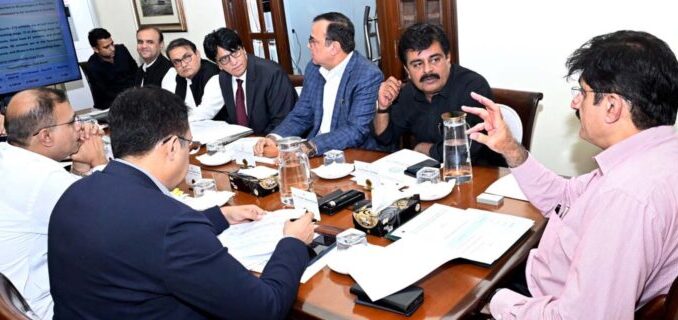Sindh Chief Minister Syed Murad Ali Shah has launched the Student Attendance Monitoring and Redress System (SAMRS), calling it a “pioneering, transformative, and nationally replicable model” for education reform in Pakistan. Speaking at the provincial launch ceremony in Karachi, he said the initiative marks the first time any province has introduced a unified digital system linking student attendance, teacher performance, school infrastructure, and learning outcomes. The launch of SAMRS as Pakistan’s First Integrated Education Reform Model reflects Sindh’s move toward data-driven governance in the education sector.
“This is not just a monitoring tool,” said CM Murad. “It allows us to make evidence-based decisions rather than assumptions, giving us the ability to respond quickly and effectively to the challenges our children face.”
The event was attended by Education Minister Syed Sardar Shah, World Bank Country Director Bolormaa Amgaabazar, senior representatives of Unicef, GPE, ADB, the British Council, JICA, education experts, and officials from the School Education and Literacy Department (SELD).
According to the chief minister, SAMRS has already gone live in 600 schools across 12 districts and is now expanding to four additional districts through Unicef’s support. The system not only tracks attendance but also predicts student dropout risks, recommends timely interventions, and improves overall school management.
Murad Ali Shah described SAMRS as Pakistan’s First Integrated Education Reform Model that can be adopted nationwide. He announced that the Sindh government is institutionalising the system through a long-term policy ensuring sustainability and full integration into the province’s education governance framework. He thanked the World Bank, GPE, and other development partners for their “trust, technical guidance, and unwavering support” in strengthening Sindh’s education system.
The chief minister also urged that SAMRS be linked with child health, nutrition, and protection programs, suggesting integration with immunisation drives, health screenings, and social safety systems. “Schools must be more than classrooms — they must become centres of child well-being and community trust,” he said.
Education Minister Sardar Shah hailed SAMRS as a “game-changer,” noting that the digital system merges attendance, performance, and infrastructure data to shape policy decisions. He added that with NADRA’s help, student identities are being verified through B-Form numbers, ensuring every child in Sindh is accurately registered and supported.
He shared that 99 percent of schools using SAMRS have reported attendance, and 92 percent have implemented redress procedures, marking a major step in reducing dropouts and improving accountability.
World Bank Country Director Bolormaa Amgaabazar appreciated Sindh’s leadership in introducing SAMRS, clarifying that it is not a donor-driven project but a homegrown initiative led by the provincial government — “a commitment to improving education, not just attendance.”

